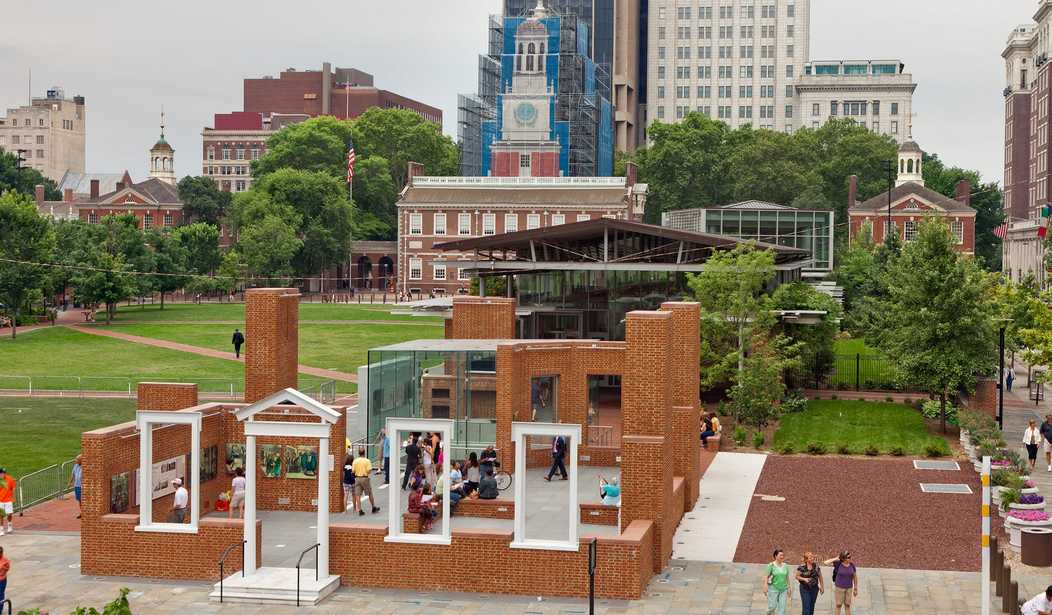An article published by the April 2017 American Institute of Architects Journal asks: Should architects step into the political ring? The writer, Chris Bentley, recalls the “March for Science,” which was supposed to be non-partisan but wound up being a protest against President Trump. He asks: “Can a March for Architects be far behind?”
The March for Architects may not be here, but architectural PC culture is alive and well.
One need look no further than the city of Chicago to get wind of current trends. Keefer Dunn, a Chicago architect who calls himself an “architectural worker” (that’s a Marxist with a bricks-and-mortar accent), writes: “Architects must reach beyond the profession and locate their activism in the context of mass movements.” Dunn adds: “There is no such thing as an activist architecture, only activist architects.”
Politically correct psychobabble has already affected the world of interior design. A 2013 issue of House Beautiful details how the term “Master Bedroom” is being replaced by ‘Owner’s suite” or Owner’s Bedroom” because the word “Master” has negative connotations in terms of gender.
As far back as 1991, New York Times architecture critic Paul Goldberger wrote that the most politically correct building in New York was the Swiss Bank Tower behind Saks Fifth Avenue in midtown Manhattan. Goldberger wrote: “This building does everything right; its fundamental quality is an unwillingness to offend. And like the P.C. of academia, it is so successful at not offending that it ends up having nothing to say. This is the architecture of blandness. It is also the architecture of good intentions, but good intentions alone can rarely carry the day, especially when they are interpreted as much in terms of pulling punches as they have been here.”
The most politically correct building in my home town of Philadelphia is the President’s House at Fifth and Market Streets, which opened in 2010. As I write in my book, Philadelphia Mansions: Stories and Characters Behind the Walls, the President’s House is a perfect example of a building designed by committee.
Not only does it resemble a half-constructed modular home, but this skeletal tribute to Presidents Washington and Jefferson also might double as a transit subway stop. The structure’s minimalist frame, while pretending to take smart cues from the (nearby) Robert Venturi–designed Franklin House, is a disaster on all fronts. The $10.5 million design tragedy, which incited an eight-year ideological war between the National Park Service and various African American community organizations, could have been a success if political squabbling had taken a backseat to architecture. But it did not. The current President’s House is what happens when ideology trumps architecture and design.
This Kelly/Maiello Architects & Planners structure should be laid bare and another architect, like Robert A.M. Stern, brought in to redo the project. Stern, who has designed buildings in the classical tradition for the University of Pennsylvania and is the recent recipient of the Driehaus Prize for classical architecture, could at least be counted on to deliver a substantive building that would give Philadelphians and tourists alike a “real” President’s House.
In 2011, Inquirer columnist Annette John-Hall took the New York Times to task for its bad review of the house. The Times found the house to be an “ineffectual mishmash that has reached new lows.” The Times continued: “[W]e get neither a sense of the place, nor a sense of the issues (and much of the year, the open air will be inhospitable). We don’t learn about the differences between Washington and Adams. We don’t learn much about the pictured events. There is no real narrative.”
John-Hall countered that the present site’s focus on slavery is justified because of the slave artifacts found in the building’s foundation. “A narrow little inconvenient truth surfaced as plans were made to build a president’s house memorial,” John-Hall wrote. “Something conveniently omitted from my history books: Washington unapologetically owned more than 300 Africans, nine of whom he shuttled back and forth between his Virginia plantation and his presidential home in Philadelphia.” Sad but true, but those were slave days when only a few exceptional visionaries abstained from the sin of slavery. To judge 18th and 19th century behavior by 21st century standards is both irrational and self-righteous. The present structure — with its nine cluttered, open-air slave reenactment videos and grade school–like “teaching” storyboards fastened on the brick and granite walls — is an intellectual embarrassment. Visitors get Reader’s Digest–style sound bites about the lives of presidential slaves. Call it the President’s Slaves’ House, but mixing oil and water like this comes close to false advertising.
This is still true today, when critics, for the most part, have stopped writing about the site. As it is, the only “president” we get is the down-under, glass-enclosed archaeological dig showcasing the foundations of the real house built sometime between 1790 and 1800 (but demolished in 1833). While the framed “dig” works very well as a centerpiece, everything else on the ground floor — the representational door, window, and fireplace frames of the original house — points to a curious flip-flop as the slave narrative dominates and “enslaves” the story of the presidents (or the evil oppressors in the archeological hole).
It’s not that the story of slavery in Philadelphia shouldn’t be told. Tell it, by all means — shout it, preach it from the mountaintop — but don’t superimpose it onto another story. The design message of the President’s House seems to be nothing but a judgment of 19th century views by 21st century standards. As a result, the visitor leaves knowing nothing about some of the people who lived in this house, like Benedict Arnold and Robert Morris, to name only two.
If the mission of the architects was to cast aspersions on the presidents the house is supposed to honor, then they succeeded in equating the Founding Fathers in wigs with the Klu Klux Klan. The evangelical zeal with which this message is delivered is like getting hit on the head with a hammer. I’m thinking of those “instructive” billboards placed around the house, especially the one entitled, “The Dirty Business of Slavery,” which seems to be in the running for the Captain Obvious Award. We don’t need to be reminded like third graders that slavery was “dirty.” And we certainly don’t need to have this message drummed into our heads as if these billboards were stand-ins for teachers with rulers, ready to “smack” us in case we’re not paying attention.
As Robert Tracinski of The Federalist wrote, “This is modernism’s desperate bid, in the twenty-first century, to regain some degree of relevance to the culture. Empty of any discernible content or value, it fills that artistic vacuum with political sloganeering.”









Join the conversation as a VIP Member